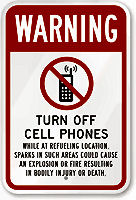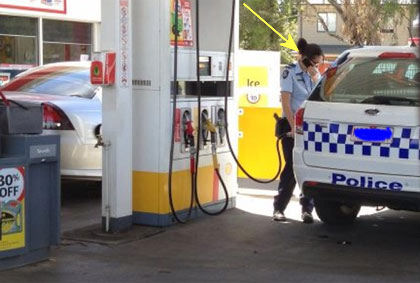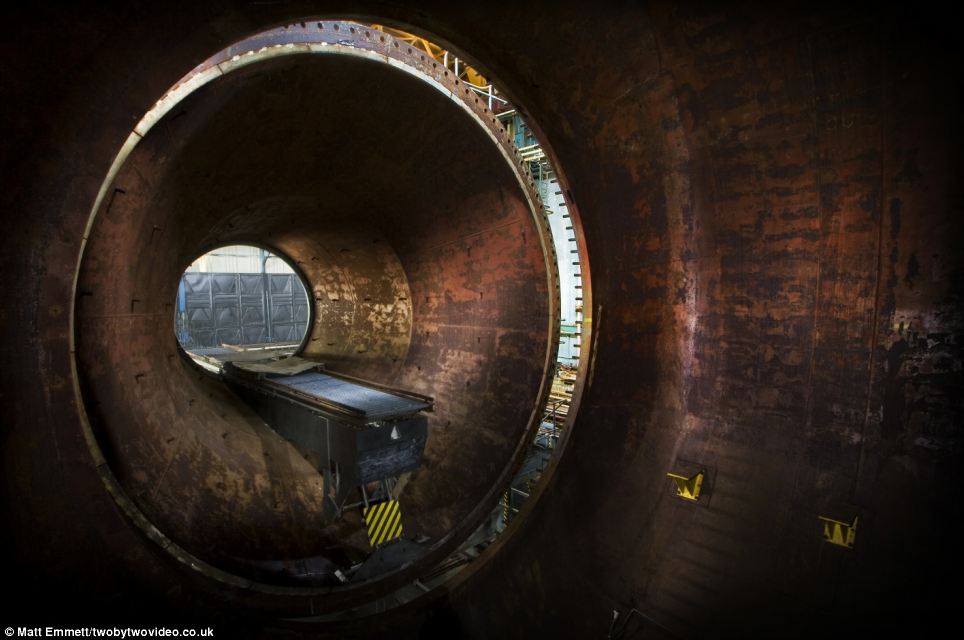|
|
|
Radschool Association Magazine - Vol 42 Page 15 |
|
Privacy Policy | Editorial Policy | Profit Policy | Join the Association | List of Members | Contact us | Index | Links |
|
Back Go to page: 1 2 3 4 5 6 7 8 9 10 11 12 13 14 15 16 17 18 19 20 Forward |
|
Hedwig Kiesler.
In 1933, a beautiful, young Austrian woman took off her clothes for
a movie director. She ran through the woods ... naked. She swam in a
lake ... naked. Pushing well beyond the social norms of the period, (you
can see part of the movie
HERE)
The most popular movie in 1933 was King Kong but everyone in Hollywood was talking about that scandalous movie with the gorgeous, young Austrian woman.
Louis B. Mayer, of the giant studio MGM, said she was the most beautiful woman in the world. The film was banned practically everywhere ... which of course made it even more popular and valuable. Mussolini reportedly refused to sell his copy at any price.
The star of the film, called Ecstasy, was Hedwig Kiesler. She said the secret of her beauty was "to stand there and look stupid." In reality, Kiesler was anything but stupid. She was a genius. She'd grown up as the only child of a prominent Jewish banker. She was a math prodigy. She excelled at science.
As she grew older, she became ruthless, using all the power her body and mind gave her.
Between the sexual roles she played, her tremendous beauty and the power of her intellect, Kiesler would confound the men in her life ... including her six husbands.
Her beauty made her rich for a time. She is said to have made, and spent, $30 million in her life, an enormous sum back in the 1930’s. But her greatest accomplishment resulted from her intellect and her invention continues to shape the world we live in today.
You see, this young Austrian starlet would take one of the most valuable technologies ever developed right from under Hitler's nose. After fleeing to America, she not only became a major Hollywood star ... her name sits on one of the most important patents ever granted by the U.S. Patent Office.
Today, when you use your mobile phone or, over the next few years, as you experience super-fast wireless Internet access (via something called "long-term evolution" or LTE" technology), you'll be using an extension of the technology a 20- year-old actress first conceived while sitting at dinner with Hitler.
At the time she made Ecstasy, Kiesler was married to one of the richest men in Austria, Friedrich Mandl. He was Austria 's leading arms maker and his firm would become a key supplier to the Nazis.
Mandl used his beautiful young wife as a showpiece at important business dinners with representatives of the Austrian, Italian, and German fascist forces. One of Mandl's favorite topics at these gatherings -- which included meals with Hitler and Mussolini -- was the technology surrounding radio-controlled missiles and torpedoes.
Wireless weapons offered far greater ranges than the wire-controlled alternatives that prevailed at the time. Kiesler sat through these dinners "looking stupid," while absorbing everything she heard. As a Jew, she hated the Nazis. She abhorred her husband's business ambitions. Mandl responded to his wilful wife by imprisoning her in his castle, Schloss Schwarzenau In 1937, she managed to escape by drugging her maid, snuck out of the castle wearing the maid's clothes and sold her jewellery to finance a trip to London.
She got out just in time. In 1938, Germany annexed Austria and the Nazis seized Mandl's factory. He was half Jewish himself and was forced to fell to Brazil where later, he became an advisor to Argentina's iconic populist president, Juan Peron.
In London, Kiesler arranged a meeting with Louis B. Mayer of MGM fame. She signed a long-term contract with him, becoming one of MGM's biggest stars and appeared in more than 20 films. She was a co-star to Clark Gable, Judy Garland, and even Bob Hope. Each of her first seven MGM movies was a blockbuster.
But Kiesler cared far more about fighting the Nazis than about making movies. At the height of her fame, in 1942, she developed a new kind of communications system, optimized for sending coded messages that couldn't be "jammed." She was building a system that would allow torpedoes and guided bombs to always reach their targets. She was building a system to kill Nazis.
By the 1940s, both the Nazis and the Allied forces were using the kind of single-frequency radio-controlled technology Kiesler's ex-husband had been peddling. The drawback of this technology was that the enemy could find the appropriate frequency and "jam" or intercept the signal, thereby interfering with the missile's intended path.
Kiesler's key innovation was to "change the channel." It was a way of encoding a message across a broad area of the wireless spectrum. If one part of the spectrum was jammed, the message would still get through on one of the other frequencies being used. The problem was, she could not figure out how to synchronize the frequency changes on both the receiver and the transmitter. To solve the problem, she turned to perhaps the world's first techno-musician, George Anthiel.
Anthiel was an acquaintance of Kiesler who achieved some notoriety
for creating intricate musical compositions. He synchronized his
melodies across twelve player pianos, producing stereophonic sounds no
one had ever heard
Like all good inventions, this one was relatively simple, one of those “why didn’t I think of that?” inventions – it worked like this. You have a tuneable transmitter at one end and a tuneable receiver at another. You then make two identical frequency changing mechanisms and hook one up to the transmitter and the other to the receiver. When you want to transmit a signal that can’t be jammed or copied you just start both mechanisms at the same time then as the transmitter and receiver change frequency they do so together on the same frequency at the same time.
Luckily, no one had invented a scanner back then.
On August 11, 1942, U.S. Patent No. 2,292,387 was granted to Antheil and "Hedy Kiesler Markey," which was Kiesler's married name at the time.
Most of you won't recognize the name Kiesler. And no one would remember the name Hedy Markey. But it's a fair bet than anyone reading this newsletter of a certain age will remember one of the great beauties of Hollywood 's golden age -- Hedy Lamarr. That's the name Louis B. Mayer gave to his prize actress. That's the name his movie company made famous.
Meanwhile, almost no one knows Hedwig Kiesler -- aka Hedy Lamarr -- was one of the great pioneers of wireless communications. Her technology was developed by the U.S. Navy, which has used it ever since.
You're probably using Lamarr's technology, too. Her patent sits at the foundation of "spread spectrum technology," which you use every day when you log on to a wi- fi network or make calls with your Bluetooth-enabled phone. It lies at the heart of the massive investments being made right now in so-called fourth-generation "LTE" wireless technology. This next generation of cell phones and cell towers will provide tremendous increases to wireless network speed and quality, by spreading wireless signals across the entire available spectrum. This kind of encoding is only possible using the kind of frequency switching that Hedwig Kiesler invented.
|
|
There are two kinds of people in this world: Those who wake up in the morning and say, "Good morning, Lord," and those who wake up in the morning and say, "Good Lord, it's morning!"
|
|
Mobile phones at the servo.
Warnings
about the dangers of using mobile phones in the presence of petrol fumes
began circulating on the Internet in 1999. Though both versions of the
Internet warning allude to an accident in Indonesia wherein a driver was
burned and his car badly damaged as a result of such an explosion, no
reports have ever surfaced in the news media to confirm the incident
ever happened. Moreover, nothing has ever turned up about similar
explosions in other countries. If sparks from mobile phones were
touching off explosions at petrol stations around the world, the
phenomenon has somehow escaped the media’s notice.
Curiously, in May 1999 a lengthy article appeared in the Bangkok Post in support of this tale. It mentioned “a recent report in the China Post newspaper” and from there proceeded to parrot the warning given in the longer example quoted above, complete with reference to the report by Shell Chemicals on the injuries suffered by the man in Indonesia and the Chinese Petroleum Corporation’s instructions to filling stations to get drivers to switch off their phones while fueling. One wonders where the writer of the Bangkok Post article harvested his information —from the Internet in the form of the much-forwarded warning, or from reading the newspaper article in the China Post.
The story about a bloke in Indonesia being turned into a human fireball, doesn’t stand up, nor does the one about the Australian man done in by his mobile phone as he fueled his car although in 1999 oil companies told the South China Morning Post they had heard reports of an Australian man being blown up when his phone rang as he was filling his car. When questioned, Fire service heads in Australia insist the incident never happened. As for incidents elsewhere in the world, after several reports in the United States where mobile phones were blamed for fires at servos, both the Cellular Telecommunications Industry Association (CTIA) and the American Petroleum Institute issued statements denying the risk. The CTIA said, “There is no evidence whatsoever that a mobile phone has ever caused ignition or explosion at a station anywhere in the world. Wireless phones don’t cause servos to blow up. Warnings being posted in servos simply perpetuate the myth.”
The American Petroleum Institute said, “We can find no evidence of someone using a mobile phone causing any kind of accident, no matter how small, at a servo anywhere in the world. ”There was a warning memo which originated at a Shell loading station in California, but it was issued only to caution employees about the potential dangers of static-related hazards at fueling stations; it said nothing about mobile phones touching off fires
So!! Even though it hasn’t happened yet. is there still a chance of an as yet unrealized risk in using mobile phones while refuelling?
According to some experts, there is a danger that using a mobile phone
near pumps could touch off an explosion, but not only is there no
real-life instances of such an explosion occurring, there is no evidence
of anyone who has demonstrated experimentally that it’s even possible
(including the folks at The Discovery Channel’s Myth Busters program).
Even so, pumps in Australia bear stickers cautioning motorists to turn
off their phones while refuelling; Shell in Malaysia has affixed similar
stickers to each of its pumps; numerous pumps in the U.S.A. are
similarly adorned.
Mobile phone manufacturers Nokia and Ericsson have said the risk is very small that something will happen, but since there is a risk, it should be counted. Nokia also said that the company has been recommending for a long time that mobile phones should be turned off while the car is being refuelled. So, what it is about a mobile phone that could possibly trigger an explosion? The claim that the batteries used in a mobile can ignite gasoline seems a bit ridiculous since mobile batteries are the same voltage as car batteries (12V D.C.) but deliver far less current. Likewise, the claim that a mobile’s ringer uses more than100 volts for “excitation” is a curious artefact of the “regular” telephone era: mobiles don’t have ringers; they produce audio tones that simulate the sound of a ringing telephone.
News reports routinely attribute servo fires to mobile phone use whenever a fire occurs at a service station and where a phone was in use at the time, and police and fire-fighters at the scene often simply assume the connection between the two to be valid. Later investigations, however, have always shown in such cases that the press reports were wrong, that something else touched off the fires and the presence of mobile phones was coincidental rather than causal. In a world where people are increasingly unwilling to allow even the possibility of something going wrong, however, we’re bound to see even more regulations “protecting” us from yet another non-existent threat.
In June 2002 the following authoritative-sounding warning began circulating on the Internet:
“The Shell Oil Company recently issued a warning about three incidents where Mobile Phones have ignited fumes while being answered or ringing during fuelling operations”. It then quoted:
“Case 1. The phone was placed on the car’s boot lid during fuelling, it rang and the ensuing fire destroyed the car and the gasoline pump. Case 2 An individual suffered severe burns to their face when fumes ignited as they answered a call while refuelling their car. Case 3 An individual suffered burns to the thigh and groin as fumes ignited when the phone, which was in their pocket, rang while they were fuelling their car.
What should you learn from this? It is a misconception that Mobile Phones are intrinsically safe and can’t ignite fuel/fumes.
Please share this with employees who do not have access to email, family members and friends to help keep everyone safe.”
Although thorough investigations have been made, there has been no news reports found that confirm any of the three incidents described in the e-mail. Moreover, Shell denies having issued a warning of this nature: It also says “It is understood that there is another email, purportedly an official Shell communication, circulating which describes various incidents that are supposed to have occurred as a result of mobile phones ringing while at a servo. Please be advised that the email in question does NOT originate from Shell Malaysia and we are unable to confirm any of the incidents quoted.”
In fact, this email has been traced back to a hoax email that landed in the inbox of a Shell employee in Jamaica. Not thinking, he forwarded it on, but with the Shell Company signature now on the email - and this accidental non-approved signature gave the hoax its credibility.
Makes you wonder doesn’t it??
|
|
Couple of old blokes talking over a beer, one said "I went out with a nurse again last night... Someday, I hope I'll be able to go out without one."
|
|
The sad demise of
Pyestock
21st April, 2013
Below is the sad remains of an engineering site that gave birth to some of Britain's most awesome engines. National Gas Turbine Establishment - known as Pyestock - closed in 2000. It now faces demolition.
Pyestock, in Fleet, Hampshire, opened after the Second World War and was, for over 50 years, at the forefront of gas turbine and jet engine research as well as development and testing. As massive pipes snake through chambers filled with abandoned machinery, it could almost be the set of Ridley Scott's horror classic Alien. |
|
|
|
Since its closure in 2000, it has fallen into a state of neglect and is now scheduled for demolition. In its place will stand a vast retail distribution depot. Many of the site's original fixtures such as dials, knobs, buttons and electrical boards are still in place, harking back to the age of British ingenuity. It was also used to scrutinised Soviet engines captured during Cold War
The loss of Pyestock marks a significant loss for British industry. |
|
|
|
Note the Dos 6 handbook.
This place played such a important world-leading role in engine development that it's hard to imagine that it's something the UK willingly let go.
|
|
|
|
The chamber in engine test cell 4 - the largest of its kind in the world. This was used to test Concorde's engines at a staggering 2,000mph and at an atmospheric pressure of 60,000ft You can see a video of the place HERE.
|
|
Today is the oldest you've ever been, yet is also the youngest you'll ever be so enjoy this day while it lasts. |
|
Pamela Pointon.
Pamela, was spotted with her dad, Merv Reece, at the recent Catalina Festival which was held at the old Rathmines RAAF base in NSW 2-4 Nov last year.
Merv was an old RAAF framie and worked on the Catalinas during the war and he was keen to see inside one again and especially keen to see and hear one in the air.
Pamela is a CPA and lives on the Gold Coast and in 2011 was President of the Queensland chapter of the CPA association.
Old is when:
|
|
Back Go to page: 1 2 3 4 5 6 7 8 9 10 11 12 13 14 15 16 17 18 19 20 Forward |
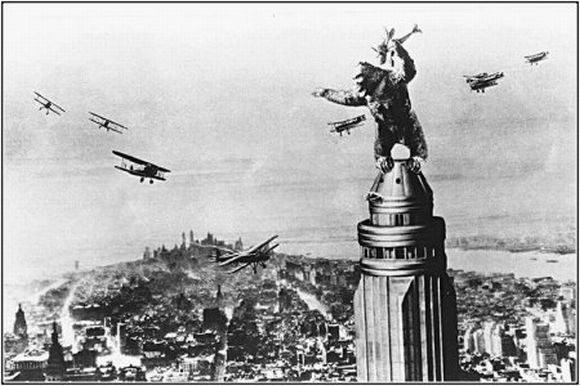


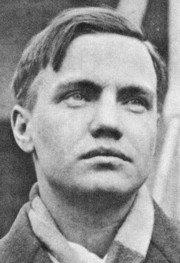 before.
When Kiesler incorporated Anthiel's technology for synchronizing his
player pianos, she was able to synchronize the frequency changes between
a weapon's receiver and its transmitter.
before.
When Kiesler incorporated Anthiel's technology for synchronizing his
player pianos, she was able to synchronize the frequency changes between
a weapon's receiver and its transmitter.